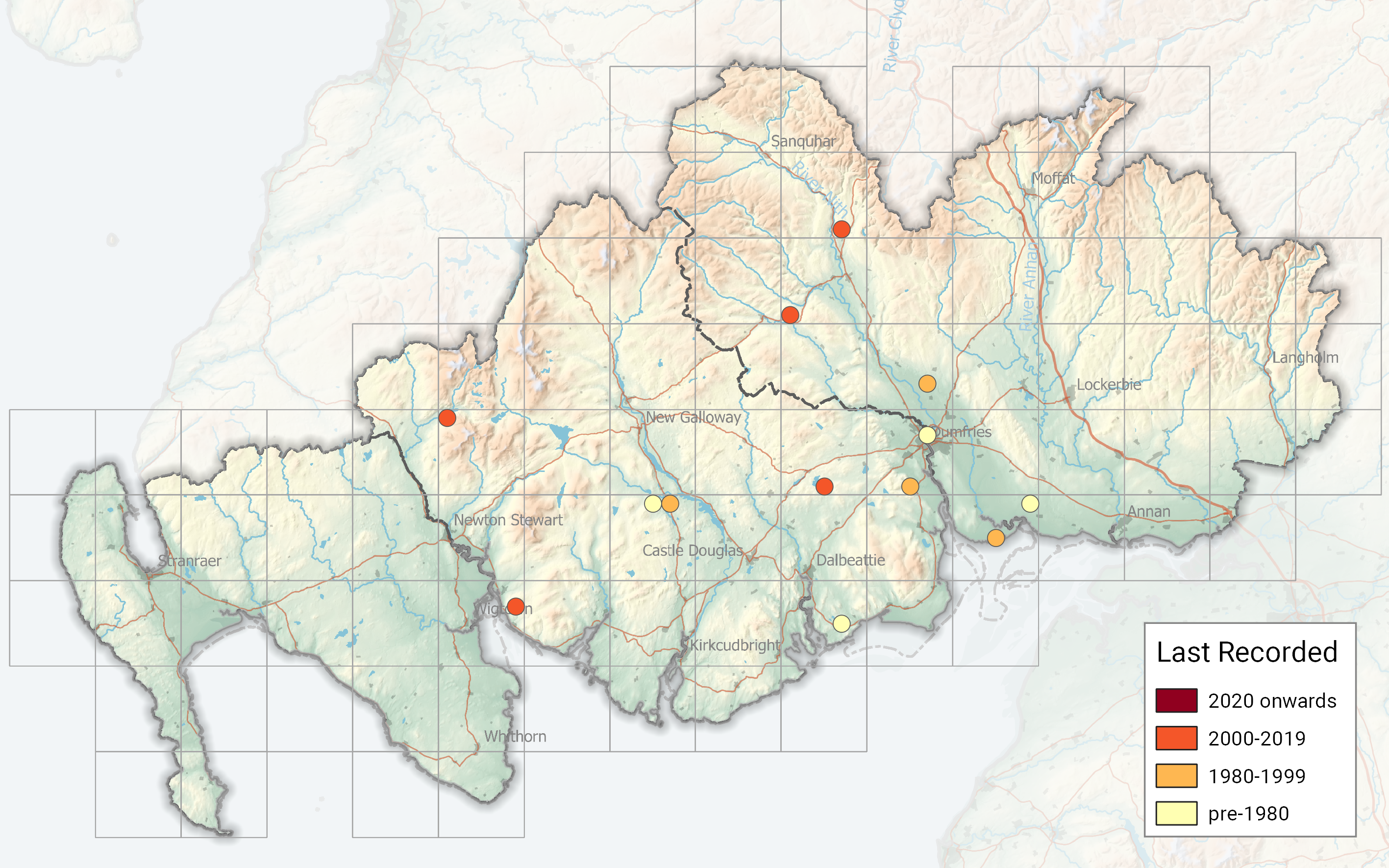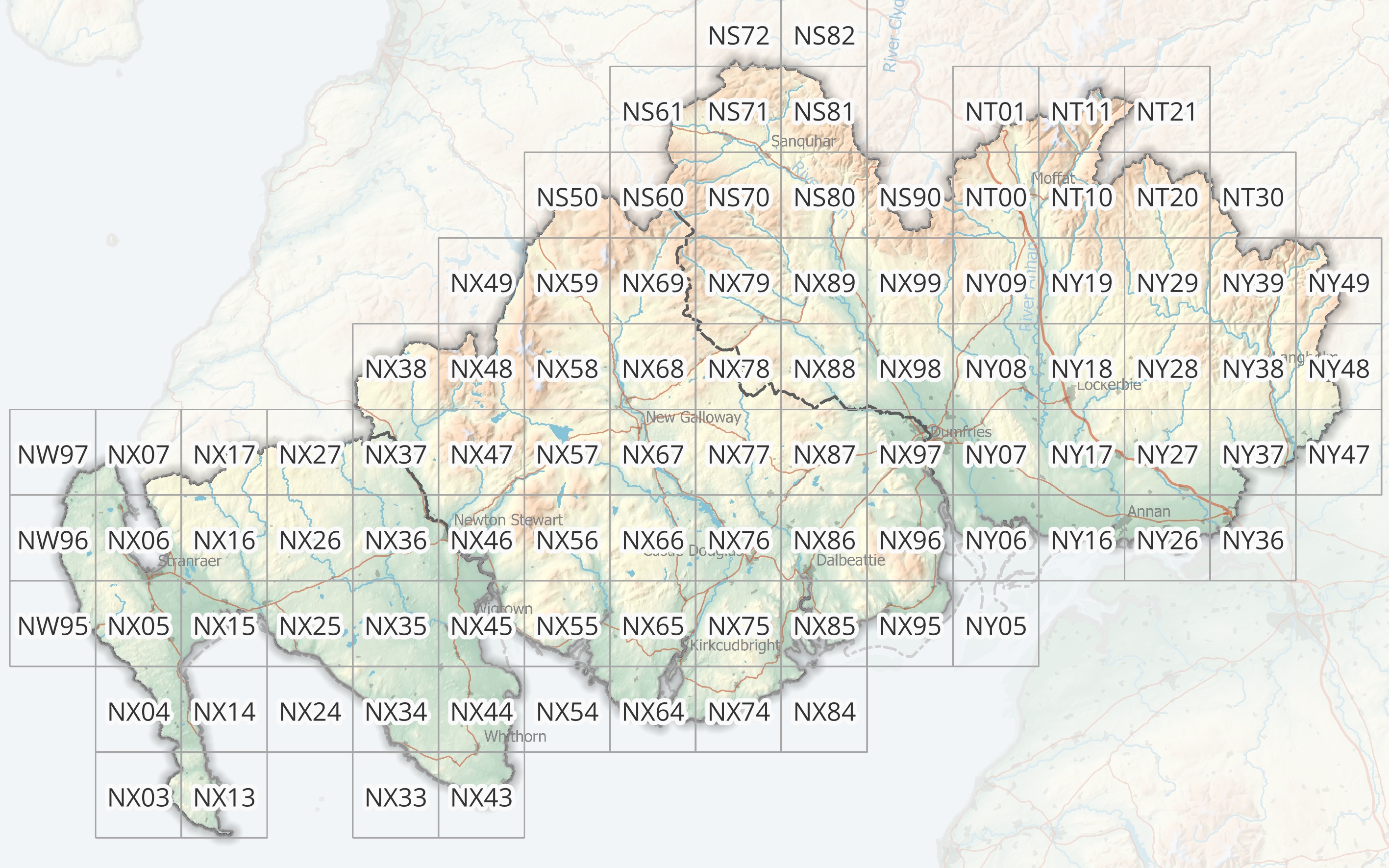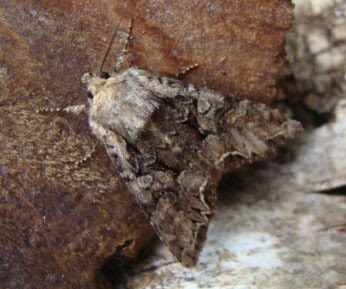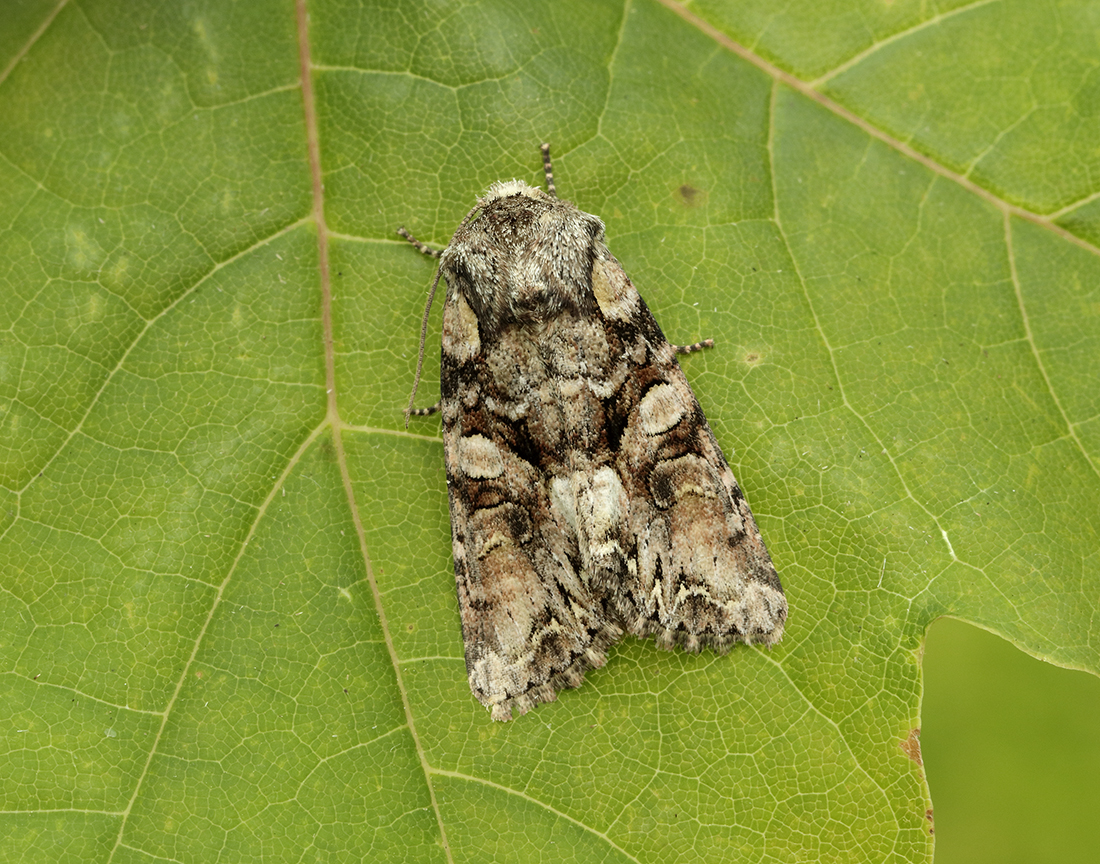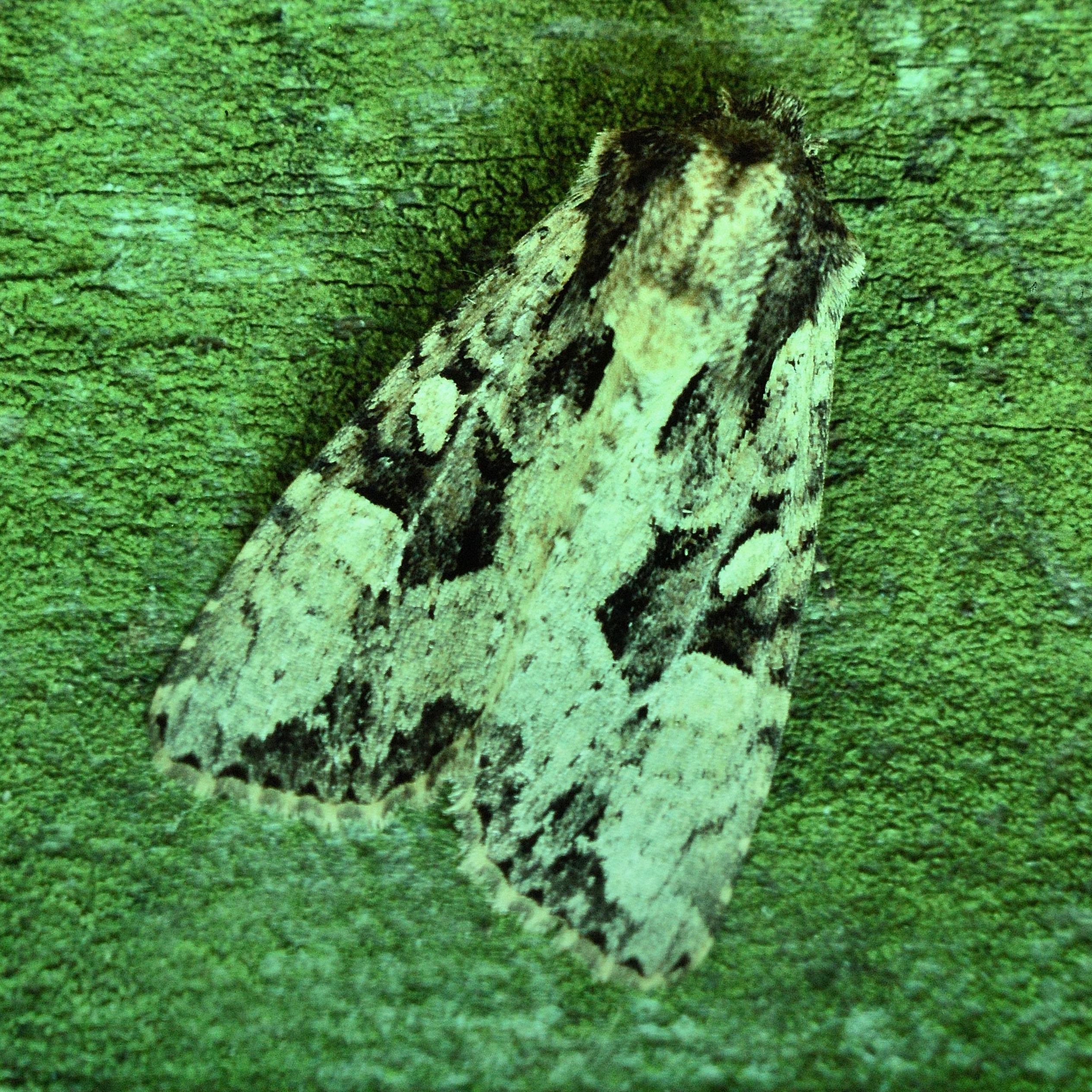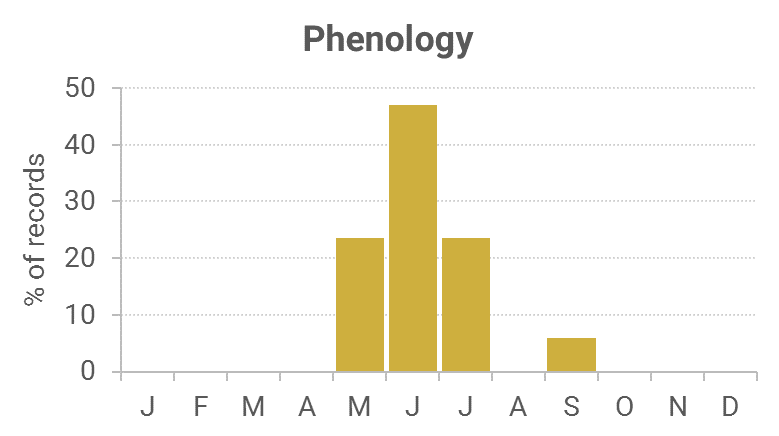Identification
This moth can be distinguished by the marbled appearance and broken whitish oblique band running from the centre to the trailing corner, forming a ‘V’.
Recording Method.
Attracted to light, also comes to sugar.
Life cycle
One generation. Overwinters as a pupa in an underground cocoon. Larva from late July to September, feeding by day and night.
Larval foodplants
Larvae mainly feed on woody plants including birches, oaks, Broom, Bog-Myrtle and Heather, as well as Dyer’s Greenweed and Bracken.
Habitat
Heathland and woodland.
History
Buchanan White of Perth (1895) listed it as occurring in Colvend and Southwick parishes (VC73).
Duncan and Cunningham (1952) caught six in June 1951 near Dumfries, probably Lochar Moss, which was a first for Dumfriesshire.
In September 1972, a record (BRC data) came from Stroan Loch, presumably a larva. Ten years later another was trapped on the Hensol Estate (VC73) in June. Mabie Forest Rothamsted station managed one specimen in June 1990, while Caerlaverock WWT caught one in June 1995. In each of the two following years it was trapped at Kirkton, and nearby at Heathhall, one was caught in 2001.
No records from Wigtownshire during this period.

